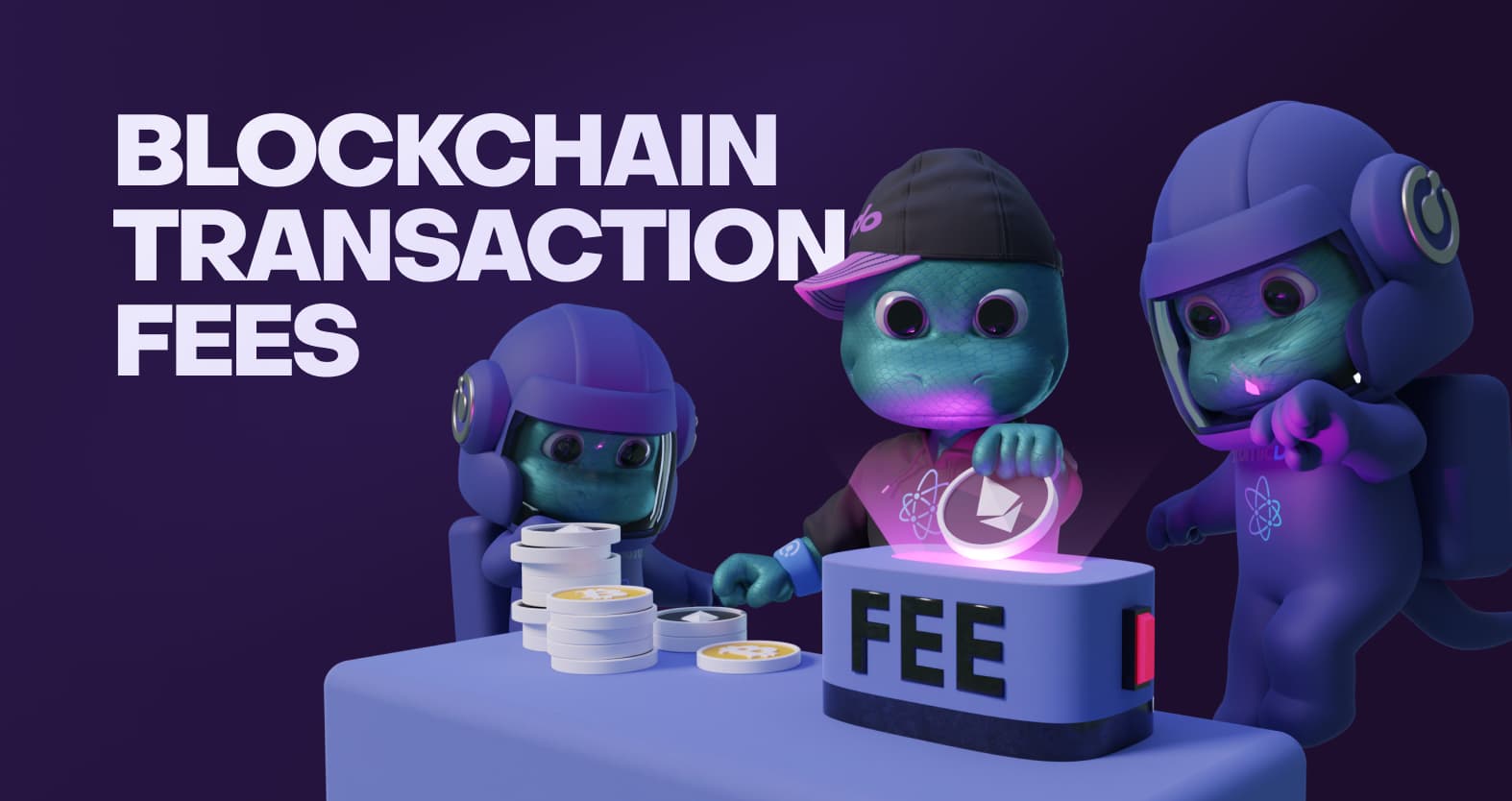
Table of contents
All blockchain transactions require network processing fees for completion. Many crypto traders pay these fees when swapping crypto assets without understanding their importance or why they are necessary.
Depending on market conditions and network activity, transaction fees could range from small amounts to extremely large amounts. Although many network users see fees as undesirable, they are essential to the blockchain ecosystem.
Why Do Blockchain Transaction Fees Exist?
Transaction fees perform two main functions on blockchain networks. Firstly, they make large-scale spam attacks on blockchain networks almost impossible, as doing this will cost money. The incurred fee reduces the number of potential malicious actors because people are less likely to spam if it comes at a cost.
Secondly, blockchain fees incentivize miners and validators who process transactions. The role of miners is to validate crypto transactions and add them to the blockchain. These miners use powerful computers that make up a portion of the network to confirm and validate all blockchain transactions. Miners then receive rewards for the large amounts of computing power and energy they use to validate transactions. For every block (a collection of transactions) they add to the blockchain, miners get payment from transaction fees.
It is worth noting that miners have a financial incentive to prioritize transactions with higher fees. This is because the average miner will not spend more computing power than it is worth to process a transaction with low fees.
How Do Cryptocurrency Transaction Fees Work?
Fees depend mainly on the transaction's size and the blockchain network's overall throughput. Generally, the more complex the transaction, the higher the transaction fee. When a blockchain is heavily congested, users can opt to add a higher fee so that miners will prioritize their transactions. Naturally, miners will quickly process transactions with the highest fees over others. This creates a bidding war for network users who want to have their transactions validated and subsequently pushes the fee price up.
However, unlike traditional payment methods, the fees paid for a crypto transaction depend not only on the amount sent but also on two other factors:
- The complexity of the transaction
- How many people are using the blockchain network at the time of the transaction
Crypto Transaction Fees Comparison
Calculating fees paid for crypto transactions is quite straightforward. The amount paid per transaction varies between exchanges and may depend on the amount of crypto sent. The blockchain network used also plays a vital role in determining transaction fees.
Bitcoin Transactions Fees
As the first blockchain network, Bitcoin inadvertently set the standard for transaction fees for all other cryptocurrencies. Unlike some other cryptos, Bitcoin (BTC) fees don't depend on the amount sent, but on the transaction size (in bytes). Complicated transactions with more inputs and outputs involve more data and are therefore more expensive.
BTC traders and miners measure their fees in 'Satoshis', the smallest divisible unit of Bitcoin, equal to 100 millionth of a bitcoin (0.00000001 BTC). The measuring unit for BTC transaction fees is sats/vByte, which means satoshi per unit of data used in the transaction. If a transaction consumes 400 bytes, and the average transaction fee is 80 satoshis per byte, the user would pay 32,000 satoshis (or 0.00032 BTC) to have their transaction validated and added to the next block.
Ethereum Transaction Fees
'Gas' is the internal monetary unit of the system used to conduct a transaction suh as sending ERC-20 tokens or interacting with decentralized applications on the Ethereum network. While the amount of gas required for a transaction does not usually change, gas prices can fluctuate. Regardless, the price relies mainly on the congestion of the Ethereum network. Similar to Bitcoin miners, users who pay higher gas prices are prioritized for transaction validation.
How To Minimize Crypto Transaction Fees
Understanding the transaction fees for crypto trades helps to predict and plan expenditures. Users who understand these charges can accurately estimate the transaction's fee and minimize costs. In addition to knowledge of transaction fees, here are a few other ways that users can reduce charges:
Check Average Blockchain Fee: If the transaction is not time-sensitive, the trader can wait until the average fee amount drops.
Opt For Decentralized Exchanges: Decentralized exchanges like AtomicDEX cut out any intermediaries, allowing for peer-to-peer crypto transactions and lower platform fees.
Hold Coins That Offer a Trading Discount: Some exchanges offer discounts to holders of their native tokens. For example, AtomicDEX offers holders of KMD (KMD) a 10% discount on trades involving KMD and another cryptocurrency.
Congestion on the Network
Transaction fees are integral to blockchain networks, as they incentivize miners to secure the network and keep it running. However, because of network congestion caused by a rising number of crypto users, these fees can sometimes spike. If there are a large number of users trying to validate transactions at the same time, each person will likely pay high transaction fees regardless of the actual transaction amount.
Try AtomicDEX — Hold and Trade Cryptocurrencies
AtomicDEX is a non-custodial wallet, cross-chain/protocol bridge, and cross-chain/protocol DEX rolled into one app that supports 99% of cryptocurrencies.
Many trading pairs offer very low transaction fees, even for trading cryptocurrencies across two different blockchain networks. Try AtomicDEX wallet to hold and trade cryptocurrencies such as Avalanche (AVAX), Zcash (ZEC), Ravencoin (RVN), and much more all from one app.




